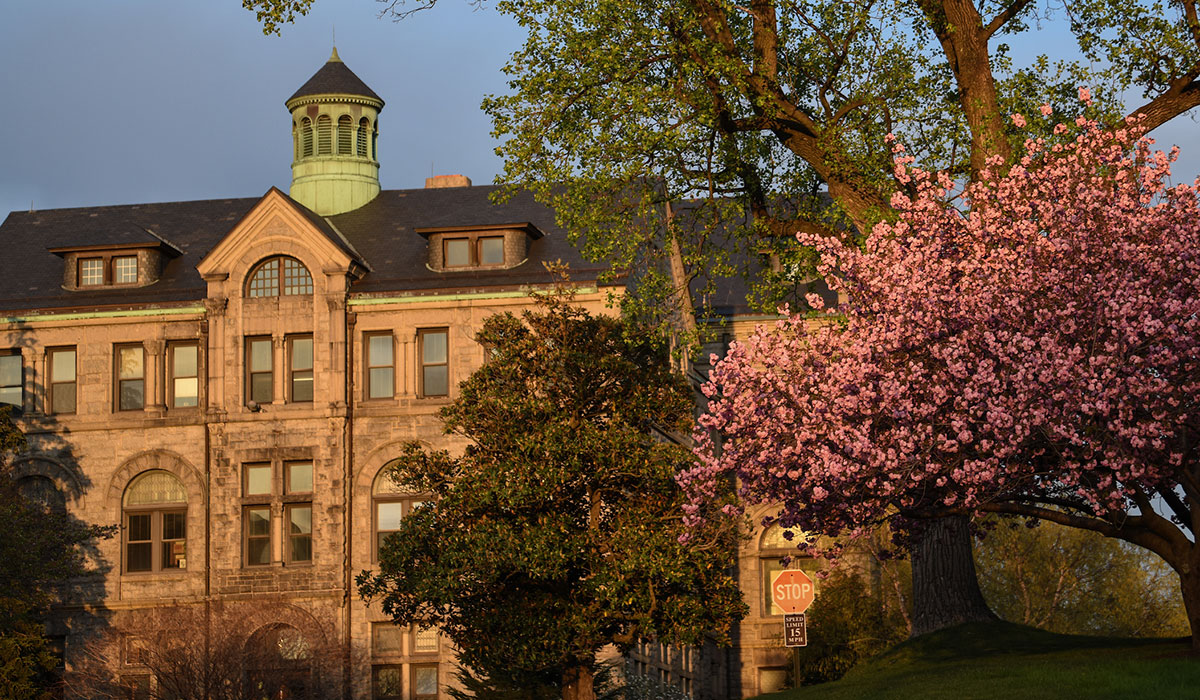

University President John Garvey was one of eight local universities to sign an updated College and University Sustainability Pledge (CUSP II) this month with DC Mayor Muriel Bowser. The updated pledge — which was based on a proposal first signed by higher education institutions in the District in 2012 — commits signatories to meet the city’s goal of becoming the “healthiest, greenest, most livable city in America by 2032 through leadership in sustainability.”
In partnership with the mayor, universities will continue their support of sustainability initiatives, including:
"Stewardship and the environment are just as important to The Catholic University of America as they were in 2012 when we signed the sustainability pledge," said University President John Garvey, who also serves as president of the Consortium of Washington Area Universities. "In 2012, we committed to reducing our energy usage, and we have achieved that through the LEED Certification of several buildings. We continue toward higher efficiency through the University-wide Energy Project that has nearly reached it's halfway point."
Additionally, this month the U.S. Environmental Protection Agency (EPA) has recognized Catholic University as an Individual Conference Champion in the 2018-19 College and University Green Power Challenge. The Catholic University of America currently uses more green power than any other school in the Landmark Conference — 100% of its electrical power is provided by wind.
The Catholic University of America is procuring a utility green power product from Direct Energy. This commitment to green power demonstrates a sustainable choice that helps to reduce the negative health impacts of air emissions including those related to ozone, fine particles, acid rain, and regional haze.
According to the U.S. EPA, Catholic University's green power use of nearly 38 million kWh is equivalent to the electricity use of nearly 4,000 average American homes annually. In addition, the campus-wide energy project is converting the campus’s antiquated steam system with a 4-pipe hot and chilled water distribution system and replacement/expansion of its central plant with energy efficient boilers and chillers.
“The University has been committed to using green energy for many years by purchasing wind power,” said Debra Nauta-Rodriguez, associate vice president for Facilities Planning and Management. “When the Energy Project is completed, the University will be prepared to operate even more sustainably by operating on less energy overall. In addition, the recently renovated Maloney Hall is on track to achieve LEED Gold status, and all future building projects have LEED goals.”
The Landmark Conference includes 8 schools in the mid-Atlantic region. For more information about EPA’s College and University Green Power Challenge, visit the Challenge website.
The University also placed in the top 30 largest green power users among higher education institutions within the Green Power Partnership. The combined green power use of these organizations amounts to more than 3 billion kilowatt-hours of green power annually, which is equivalent to the electricity use of nearly 282,000 average American homes annually.
MEDIA: For more information, contact the Office of Communications at communications@cua.edu.